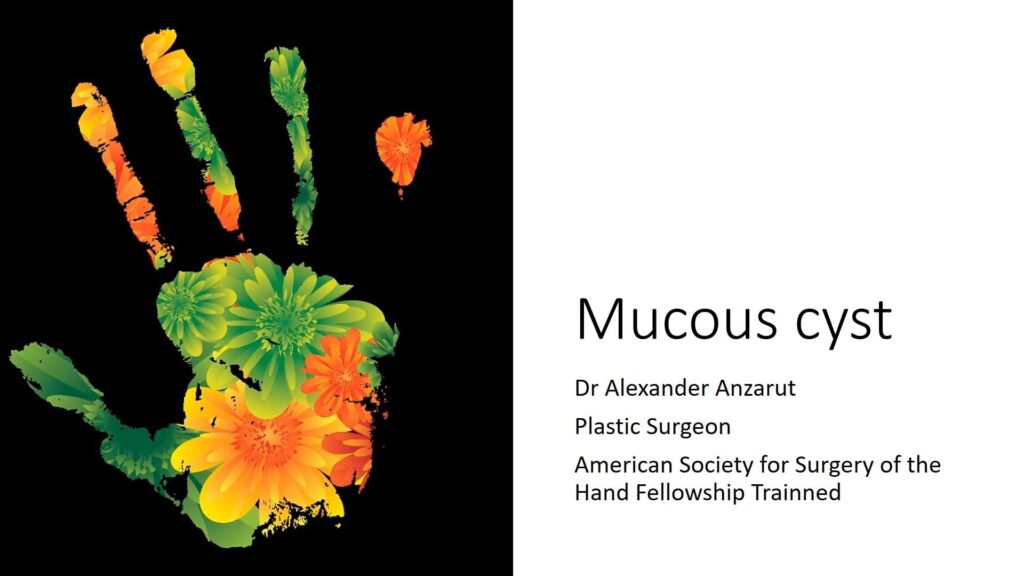
What is a Mucous Cyst?
A mucous cyst is seen as:
- A lump or swelling at the fingertip joint, usually on the top of the finger, on the same side as the nail.
- The lump may cause pressure, leading to skin erosion or breakdown, pain, and deformity of the fingernail. Often, there is a ridge that forms in the fingernail in front of the mucous cyst from the pressure that is put on the growing portion of the nail, known as the germinal matrix.
- The lump may burst and if it does, it releases a honey-like fluid which is actually synovial fluid or the fluid that bathe the joint.
What Causes a Mucous Cyst?
What causes a mucous cyst is a good question. The cause of the mucous cyst is related to breakdown of the joint, known as osteoarthritis. With loss of cartilage, as seen on this diagram here, there is inflammation at the joint and deformity at the joint. There are also changes in the joint capsule or the covering around the joint. If we look on the other side, the joint capsule is this portion in white.
With arthritis, there are small tears in the joint capsule and inflammation that leads to leakage of some of that joint fluid out into a little pocket. And that is essentially what forms the mucous cyst. With increased damage to the joint and increased stress to the joint, more and more fluid goes into the little sac or cyst and this eventually leads to pressure on the skin which can eventually break down and some of that fluid can leak out.
Again, it’s a yellow, honey-like fluid and it can also put pressure on the germinal matrix where the nail grows from, leading to a groove in the nail plate.
Treatment of a Mucous Cyst
Needle drainage is, in my opinion, the best treatment for this. Using a sterile needle, a needle that’s boiled or a needle that is bought sterile, a puncture can be made into the cyst itself. And then this honey-like or gelatinous-like fluid comes out which is the synovial fluid, and the pressure at that site is relieved. Afterwards, it’s important to keep the area clean by washing the area and using Polysporin until the opening has healed.
Surgery is an option; however, I do not generally recommend this. It has risks of infection, pain, instability, recurrence of the cyst, and delayed healing.
Surgery involves opening the skin above the cyst and creation of a scar at the site of the cyst to prevent a new cyst from forming or building up under the skin. However, it does not treat the underlying condition which is the arthritis.
Even without surgery, the condition will eventually burn itself out. Usually after a few years, the cysts stop forming even without treatment.
Watch Dr. Anzarut’s Video on Mucous Cyst Diagnosis and Treatment